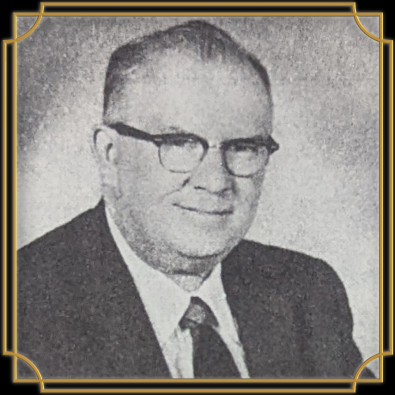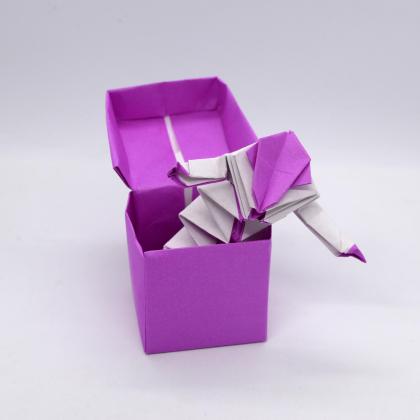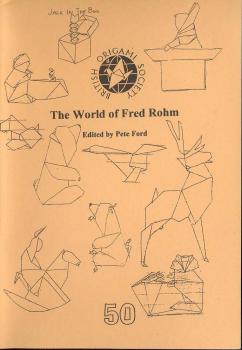
Fred Rohm
English
PA 15005
United States
FREDRIC G. ROHM, born in 1907, was a graduate of the University of Pennsylvania. He was Chief Experimental Engineer for the Lycoming Division of the AVCO Corporation in Montoursville, Pennsylvania; he held a number of internal combustion engine patents. Mr. Rohm has been a professional musician and a semiprofessional magician, as well as an amateur ham radio enthusiast. His hobbies include science fiction and puzzles. As a boy, Mr. Rohm learned to fold the Lovers' Knot and the Waterbomb. When he stopped smoking in 1959, he began to fold these figures to keep his hands occupied. Then, without knowledge that origami existed outside of these two models, he proceeded to invent the art and carry it to a high level of sophistication. By the time Mr. Rohm contacted other American folders in 1961, he had produced a large and impressive menagerie of figures.
He died in the year 1991.
Extracted from 'The Best of Origami' by Samuel Randlett, E P Dutton publishers, New York in 1963.
Issue 2 of the Origamian for Spring / Summer 1963 - Th eProfile of Fred Rohm
The Simplex Base, highlighted in this issue, is the remarkable creation of Fredric Gardner Rohm, an engineer by trade. The base and the 712 figures developed from it are only a sample of the Origami "originals" which have sprung from the mind and hands of Rohm in a brief five- year period. On June 4, 1959. Fred Rohm quit smoking and began paper folding.
Like most people who try to buck the habit. Rohm - who says that "my friends all call me Fred - and YOU are a friend"- found his nervous fingers kept wandering through his pockets and over his desk. looking for something to grapple and play with - paper clips, rubber bands, bits of paper. Anything.
Fred settled on bits of paper. At that time, he had never read a book on Origami, or ever even heard the word, for that matter. But as a child of 7 his aunt had taught him to fold something she called a "German Bow Knot" (what most of us know as the "Lover's Knot"), Then a couple of years later, he recalls that "I worked for six hours hauling ashes to earn the necessary 15 cents for a magazine which claimed to teach one 'How to Fold a Paper Cube that Blows Up'."
Fred was disappointed with his purchase. The "Water Bomb" described didn't explode, though it does "blow up."
These were the things Fred recalled, some 40 years later when he gave up smoking. In ponderous engineering meetings at AVCO's Lycoming Plant, where he is chief experimental engineer, Fred folded while others puffed. "I folded water bomb after water bomb and lover's knot after lover's knot," he says. Of course, friends and business associates made all the usual remarks about "cutting out paper dolls, Fred?" and "second childhood symptoms, that's bad." But Fred kept on folding.
Eventually, he began experimenting with variations on the water bomb and lover's knot themes. "These two figures have all the basic folds one needs to know to become a creative paper folder," Fred tells us. "So you see, I actually had a pretty good background."
It was when someone called Fred's attention to a book on Origami that Fred discovered that he was not alone in his interest. He began corresponding with the author, with Lillian Oppenheimer - and eventually with the leading names in the paper folding art. Together with Neal Elias, Sam Randlett, Jack Skillman, Ligia Montoya, and a host of others. Fred Rohm is helping Origami become a truly modern art form.
Characteristics of Fred Rohm's kind of Origami are multiple forms - a rabbit dancing on a cube, a small flock of birds clustered on a bird bath, or a watchdog emerging from his doghouse. At the suggestion of his secretary, he developed his "Chick-a-Dee" from the Simplex Base. Seen in one position, the completed figure is a baby chick; seen in another position, it is a bird (a chickadee) sitting on a tree branch.
The Simplex Base was invented by Fred, especially for this issue of "The Origamian," Easy-to-fold, and versatile as all get out, the Simplex should prove to be a boon to beginners and advanced paper folders alike, in addition to the figures described in these pages. Fred says that he has created numerous others. Its possibilities seem to be endless," he says.
Other outstanding examples of Rohm's Origami will soon be seen in the forthcoming books by Sam Randiett and Bob Harbin. Like Randlett, Fred is an accomplished musician, having played piano with large and small bands. He also plays the organ. Like Harbin, he has earned a dollar or two as a magician ("I still keep my membership card in the International Brotherhood of Magicians," he says).
Fred and Marion, his bride of 35 years, make their home in Montoursville, Pennsylvania, in a house that they built, They have two grown children.
Written by Peter Van Note
Here are 10 models that were folded by our members in memoriam of Fred Rohm, View all models



